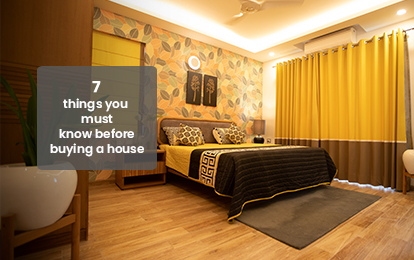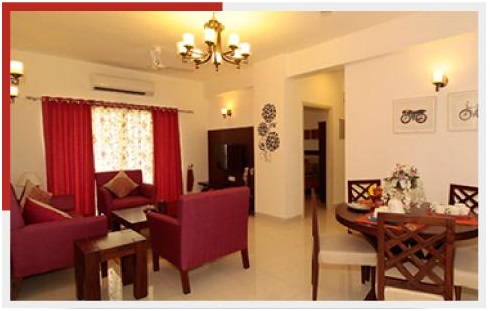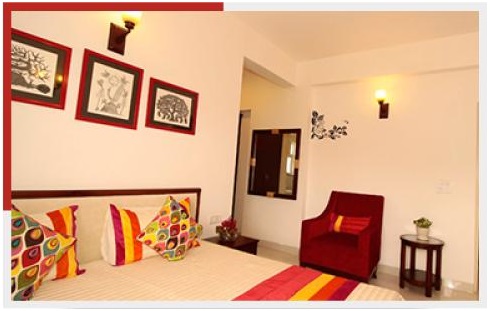
As compared to investments like bank deposits, gold etc, real estate in India offers greater potential for growth and high ROI. With the covid waves hitting back to back in India, the housing demand went up in 2020 although the income ratio was low. As per the government official the housing demand may touch upto $1 trillion by 2030 as a recovery effect of covid first and second wave. The heartening aspect is that both residential and commercial real estate are gaining equal importance. The Govt. has also realised the contribution of real estate in the development of the economy and thus has facilitated it’s growth by introducing massive changes in the taxation and regulatory aspects of real estate. The setting up of the RERA and its stringent norms have ensured transparent transactions, buyers getting full value for their investment and survival of only credible developers in the market. Affordable housing initiative by the Govt. has given hope to people from all strata of the society to own their own house.
Home buying is one of the most exhilarating as well as daunting experiences for any home buyer. A single individual is a free bird who doesn’t mind moving from one place to another for better choices in occupation but families like to settle in a prominent location with the best of amenities and ambience. Home buying requires careful planning, proper budget allocation and scrutiny of properties and parties involved. Buying a house can never be an overnight decision and any offer that looks too good to be true, most probably isn’t. Don’t shy away from asking for a detailed house inspection by an expert which is the norm nowadays while buying an old or new property. It helps in identifying areas of preventive maintenance and resolving any hidden defects in the property which saves time and money in the long run.
The price of your flat is usually based on its saleable area. But there are many ways to interpret and calculate the saleable area. This can have a huge impact on (i) the actual area you get, and (ii) your total buying price.

Although these terms are not clearly defined in any statute book, knowing what they mean will help you to:
So the 7 Things You Absolutely Must Know before buying a home are:
First we’ll briefly explain what these terms mean, and then we’ll show you – with the help of an example – how this knowledge can help you to make better decisions…..and save money.

Built-up area is the total area measured on the outer line of your flat, including balcony, terrace, etc. It refers to the usable (or carpet area as described below) of your flat plus the area occupied by the walls and columns of your flat plus a little more. In other words, the built-up area will normally also include a percentage of:
Now that you know that the built-up area of your flat includes these additional areas, you will be able to calculate the actual usable or carpet area of your flat.

Carpet area is the area enclosed within the walls of your flat. It refers to the area inside your house on which you can actually lay a carpet and physically move around. But that’s not all. The carpet area also includes a certain percentage of other areas – such as balcony, terrace and verandah – which many people tend to exclude from their calculations. This is one of the most common mistakes you can make when calculating the carpet area – which can result in your ending up with a much smaller usable or carpet area than you expected. Depending upon your builder, the carpet area of your flat can be anywhere from 50-80% of the super built-up area (explained below) quoted to you by your builder. Therefore, you should always ask your builder for the ratio of carpet area to the super built-up area. The higher the ratio of carpet area to super built-up area, the more space you get inside your flat.
Definition of carpet area under RERA
Super built-up area or saleable area is the total built-up area of your flat (explained above) plus your proportionate share of the common amenities in your building complex.It is also called the saleable area. Proportionate share here refers to the sum total of all common areas divided by the total number of flats in your building complex. So the super built-up area includes – aside from the built up area of your flat – these areas also:
Now here’s something important you should know…
The Super Built-up Area Does Not Include…
If you find that your builder has included any of these areas in the super built-up area, you should immediately bring it to his notice – and renegotiate your buying price.
Khata Certificate: It is a revenue document containing all the details of the property such as location, size, built up area etc. This certificate is a part of the home buying process and is required to pay the property taxes.
Possession Letter: This letter is provided by the builder with a mentioned date of property possession to the buyer. It is not a proof of property ownership to the home buyer. This letter is given to the buyer after the receipt of the Completion Certificate.
Allotment Letter: If you are buying an under construction property, this letter is most important for you. The letter contains all the details related to flat payment periods and hidden & extra fees for any additional facilities. This letter also helps in getting a home loan from banks.
Now that you’re familiar with the most important property-related terms, you will want to know how knowing these terms can help you act smarter and save money
How knowing these terms can help you act smarter and save money.
The following example illustrates how easily you can be misled into buying a smaller and costlier flat if you go only by the information provided by your builder (in the blue boxes)– and fail to do your own calculations.
But the calculations we’ve suggested (in the green boxes)will help you to interpret the information correctly and make a well-informed decision that works in your favor.
Architecture of Ashiana- World Architecture Day
Example
If you had to choose between Flat A and Flat B, which would you choose? Both flats measure 2000 sq ft and look equally good. Flat A costs Rs. 3500/sq ft and Flat B costs Rs. 3200/sq ft.
If like many people you overlooked the loading factor (or took it for granted) and chose Flat B because it’s cheaper by Rs. 300/sq ft, you would have not only paid more per sq ft but also ended up with a smaller flat.
To understand how, take a look at the example below. Start from the beginning….but don’t miss the three rows highlighted in green.
INFORMATION PROVIDED BY YOUR BUILDER of Flat A & Flat B
| Flat A (Super Built-Up Area) | Flat B (Super Built-Up Area) |
| 2000 sq ft | 2000 sq ft |
| Cost per sq ft | Cost per sq ft |
| Rs. 3500 per sq ft | Rs. 3200 per sq ft |
| Price (Cost per sq ft/Super Built-Up Area) | Price (Cost per sq ft/Super Built-Up Area |
| Rs. 70 lacs | Rs. 64 lacs |
Both flats appear equally big but Flat B is cheaper by Rs. 300/sq ft or Rs. 6 lakh
Flat B has a slightly higher loading factor. Loading 40% or 0.4 47% or 0.47
YOUR CALCUATIONS AFTER READING THIS ARTICLE :
| Calculation | (Loading) |
| Flat A | 60% (1 – 0.4= 0.6) |
| Flat B | 53% (1- 0.47= 0.53) |
Result: Flat A appears slightly bigger from inside (60% vs 53%)
| Calculation | Carpet Area (in sq ft) |
| Flat A | 1200 sq ft (2000 x 60%) |
| Flat B | 1060 sq ft (2000 x 53%) |
Carpet Area: Super Built-Up Area x % of Carpet Area
Result: Flat A appears slightly bigger from inside by 140 sq ft
| Calculation | Price/Carpet Area |
| Flat A | Rs. 5833.33/sq ft |
| Flat B | Rs. 6037.73/sq ft) |
Result: Flat A is also cheaper by Rs. 204.40/sq ft
Builder Buyer Agreement (BBA)
The builder buying agreement is an immensely important legal document between the buyer and the builder. Before buying any property be it for residential or commercial use, buyer should read and understand the terms and conditions mentioned in the agreement very carefully so that the buyer’s rights are protected and he/she gets exactly what they paid for. This is a legally valid document and will help the buyer in defending his/her rights in case of any mishappening.
It contains the following provisions:-
NOC (No Objection Certificate)
A no objection certificate is a legal document containing a statement of permission granted to an individual or company for buying or construction of a property.
NOC From Builder:- When buying a property or an apartment a NOC is required from the developer or society respectively to ensure that there is no due on the property by the seller at the time of the sale of the property and to ensure seamless induction of the buyer into the society. The buyer must ensure that NOC given to him/her has the following points mentioned:
NOC under RERA :- The builder requires written consent of at least 2/3rd of the allottees if he wants to transfer his rights and liabilities to a third party. After that, permission of the Real Estate Regulatory Authority (RERA) needs to be obtained which is very important.
NOC for Foreigners :- Under FEMA, any individual who is of non-Indian origin can purchase or transfer real estate property in India on lease beyond five years and can acquire real estate property in India by way of inheritance from a resident. All the transactions in this particular case will require prior permission from the Reserve Bank Of India (RBI).
Occupancy certificate (OC)
Occupancy certificate is an important document showing that the building has been constructed according to the permissible plans and by abiding local laws. The local municipal corporation issues this document after ensuring that compliance of all local laws has been done. The builder is responsible for obtaining the occupancy certificate. Many financial institutions ask for the occupancy certificate while providing loans to the buyers of property.
Completion certificate (CC)
A completion certification is a mandatory legal document stating that a new building has been constructed and completed according to all the safety norms and regulations and local laws of the Buildings Act.
Fit out period
Fit out Period is the amount of time granted to occupants by developer (cost-free unless otherwise stated) to customize the home interior according to their personal preference. The base is completely constructed by the developer but the interior can be fitted by the occupants or the former.
Saleable area is the total built up area of your flat with the area of common amenities you use. Following amenities are included in saleable area:-
Summary:
You’ve just seen how a different interpretation or calculation of saleable area can have a huge impact on both your carpet area and your total buying price. You’ve also seen that:
What other tips can you think of that buyers must absolutely know about before buying a home? Do let us know – we’d love to hear from you!
Ashiana, Ashiana Housing build homes. Homes surrounded by vast green spaces and fresh breeze. Homes cocooned in secured gated complexes. Homes where futures are forged and there are opportunities to grow. And Homes in environments brimming with healthy activity, trust and respect. At heart, we build communities with care.
Other posts by Ashiana
Join 1000+ of fellow readers. Get expert real estate knowledge straight to your inbox absolutely free. Just enter your email address below.